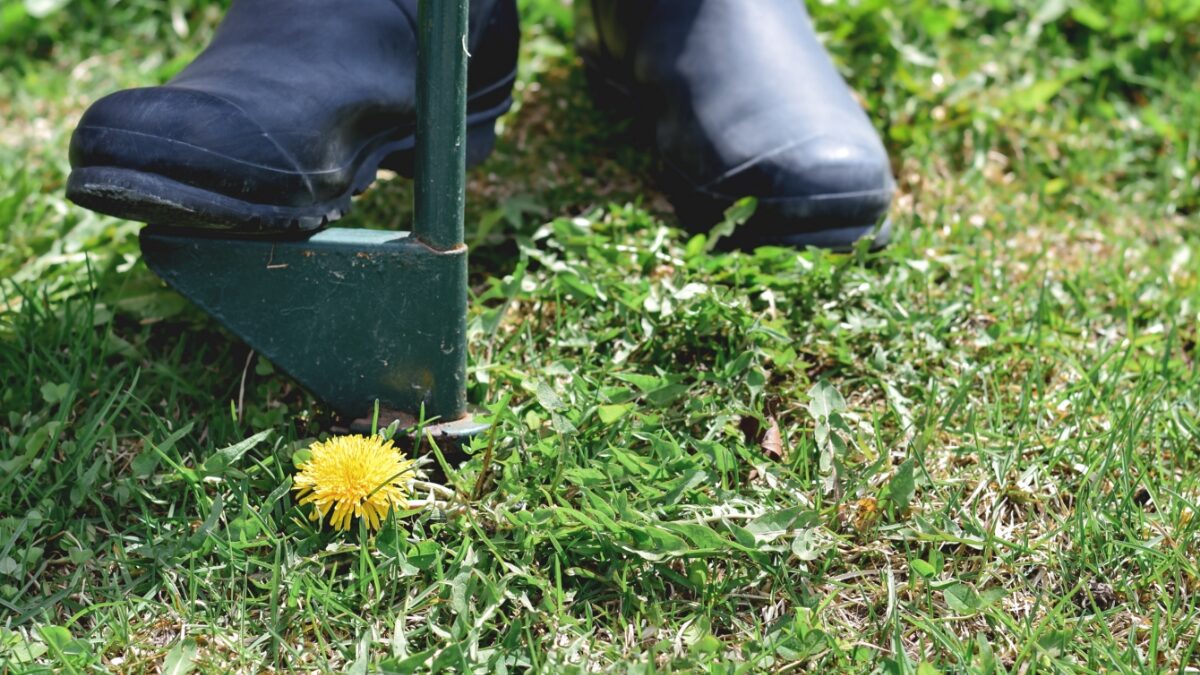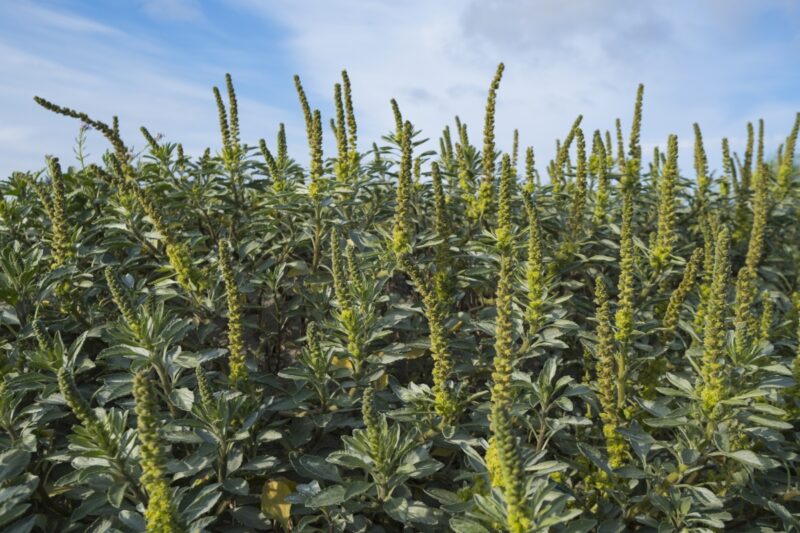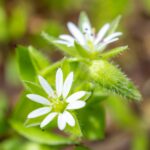
Spring in Wichita should bring joy, not the dread of battling relentless crabgrass and lawn weeds. At Elite Landscape Solutions, we’re dedicated to helping homeowners throughout Wichita create inviting, healthy landscapes. However, most Wichita lawns need a strategic approach to weed control for long-term care. So, our expert lawn care specialists put together this homeowner’s guide on how to prevent weeds in Wichita. Let’s start by looking at the most common weeds invading Wichita lawns.
Understanding the Unique Weed Landscape of Wichita
With Wichita’s unique climate, comes its own weed challenges. Crabgrass is a coarse, intrusive weed that spreads rapidly during the summer. Dandelions, those persistent yellow flowers, often start growing in fertile, soft topsoil. Chickweed and henbit, often overlooked, are early spring culprits that can quickly dominate thin lawns.
Common Weeds and When They Start Growing in Wichita
- Crabgrass: This annual weed thrives in hot, dry conditions, making Wichita summers ideal for its growth. Its seeds grow when soil temperatures consistently reach 55 degrees Fahrenheit, usually in late spring.
- Dandelions: These perennial weeds have deep taproots, making them resilient and difficult to kill off completely. Dandelions seeds are often dispersed by strong Kansas winds, adding to their widespread growth.
- Chickweed and Henbit: These winter annuals germinate in the fall, overwinter, and then flower in the spring. They prefer moist, shaded areas. Most of the time, these weeds will stop growing and spreading significantly in the summer.
The key to successful spring weed control in Wichita lies in identifying specific weeds and understanding how the changing spring temperatures influence their growing season.
- Crabgrass
- Dandelion
- Chickweed
- Henbit
Did You Know?
Some weed seeds thrive in disturbed soil and can even stabilize and improve soil conditions. According to the Missouri Department of Conservation, weeds like ragweed can add organic matter to soil, improving fertility over time and making it suitable for cool season grasses.

Pre-Emergent Herbicides and How They Work
Pre-emergent herbicides are much more than just surface level treatments. Generally, pre-emergent herbicides are designed to create a barrier in the soil’s upper layer. This barrier disrupts the germination process of weed seeds, preventing them from developing roots and shoots. It’s also important to note that some herbicides can harm grass seeds if used incorrectly. Always follow application instructions on product labels.
Types of Herbicides and How They Work
- Granular Pre-Emergents: Granular pre-emergent herbicides slowly release over time. This can help your lawn by extending the protection over a longer period of time compared to liquid options.
- Liquid Pre-Emergents: Liquid treatments offer quicker coverage and are ideal for large areas. These herbicides also allow homeowners to target specific areas better than granular options.
- Post-Emergent Herbicides: Post-emergent herbicides are weed killers designed to fight weeds that have already sprouted and are actively growing. The plant absorbs the herbicide, disrupting the life cycle, killing the weed.
- Soil Chemistry and pH: If soil is too acidic or too alkaline, grass will struggle to absorb essential nutrients. In Wichita, the ideal lawn pH is around 6.0 to 7.0. A neutral lawn pH strengthens turf growth and makes fertilizer more effective.
Timing is Everything: When to Apply Herbicides in Wichita
In Wichita, the window for pre-emergent application is narrow and critical. As a result, monitoring soil temperatures can make a world of difference.
- Soil Temperature: The most accurate way to apply your herbicide is to focus on timing. Aim to apply pre-emergent herbicides when the soil temperature reaches and stays around 50-55°F for several days. This typically happens around early spring from February to April in Wichita.
- Wichita Weather Patterns and Application: Unpredictable weather can disrupt early weed prevention in Wichita. So, keep an eye on long-range forecasts and adjust your application schedule.
- Pre-Emergent Herbicides: Granular pre-emergent herbicides typically require rainfall or water to activate the ingredients and halt seed production. It’s best to apply these herbicides before or right as light rain is expected.
- Post-Emergent Herbicides: For post-emergent herbicides it’s best to apply when the grass is completely dry. Rain or moisture can wash away the herbicide or dilute the solution.
- Act Early: When it comes to pre-emergent herbicides, it’s better to be a little early than late. Once weeds germinate, pre-emergent options won’t work.
- Avoid Stressful Conditions: Don’t apply post-emergent herbicide when your lawn or the weeds are stressed due to drought or extreme temperatures. We recommend practicing proper lawn care during a drought by steering clear of herbicides.
Did You Know?
According to the Environmental Protection Agency, the herbicides we use today were developed during World War II. The concept of using chemicals to control unwanted plants dates back centuries, but the selective herbicides we commonly use today really took off after World War II with the development of plant hormones that disrupt weed growth.

A Holistic Approach to Lawn Care in Wichita Kansas
While pre-emergents are vital, they’re just one part of effective weed control. We’ve crafted a brief list of spring Wichita lawn care tips you can practice that help fight weeds.
- Proper Mowing Techniques: The best height to cut grass to prevent weeds is around 3.5-4 inches. This promotes a dense, healthy lawn that naturally shades out weeds. Sharp mower blades also prevent tearing, which can stress grass and make it susceptible to weed invasion.
- Watering for Root Development: Deep, infrequent watering encourages deep root growth, making grass more resilient to drought and weed competition. Avoid shallow, frequent watering, which promotes shallow root systems and favors weed growth.
- Soil Aeration: Compacted soil prevents root growth and creates an environment that produces grassy weeds. Aeration improves soil drainage and oxygen flow.
- Overseeding and Dormant Seeding: Overseeding with a high-quality seed mix fills in thin areas, preventing weeds from establishing. Dormant seeding, done in late fall or early winter, allows seeds to germinate in early spring, giving your lawn a head start.
Your Partner in Effective Wichita Lawn Care
At Elite Landscape Solutions, we understand that a weed-free lawn in Wichita requires a customized approach. We provide comprehensive lawn care solutions tailored to the specific needs of our local environment including:
- Personalized Weed Control Strategies: We develop personalized pre-emergent programs based on your lawn’s unique characteristics and weed pressures.
- Lawn Disease Control in Wichita: We employ strategies, combining cultural practices, biological controls, and targeted applications to minimize pesticide use and promote long-term lawn health.
- Ongoing Landscaping Services: We provide regular lawn maintenance in Wichita, kS, helping keep your lawn healthy and weed-free throughout the season.
A weed-free lawn in Wichita is an investment in your home’s curb appeal and your family’s comfort. By understanding how to prevent weeds in Wichita you can create a lush, inviting lawn that thrives in the Kansas climate. Contact Elite Landscape Solutions today for a comprehensive lawn evaluation and personalized Wichita weed control plan.




